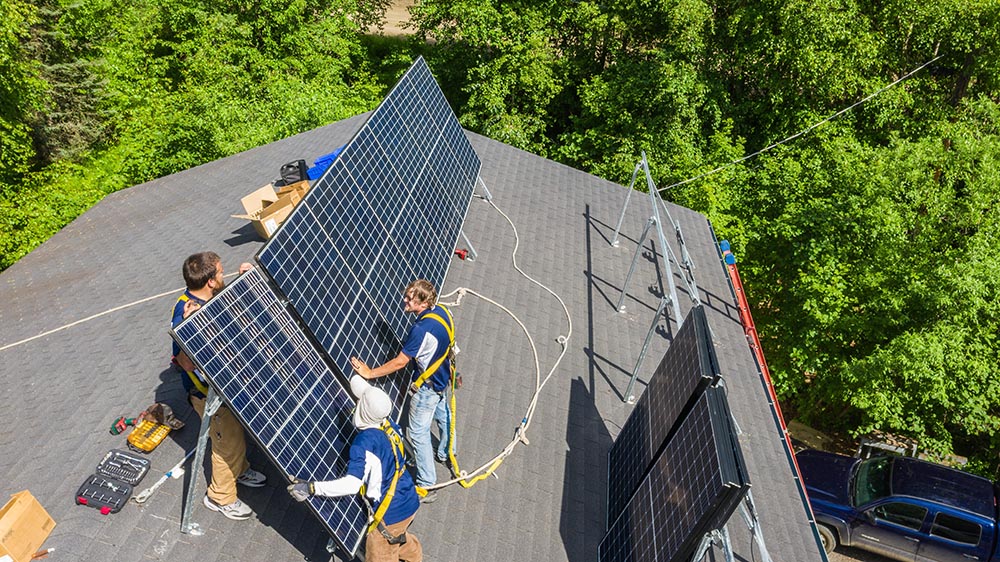
An electric cooperative in Alaska is partnering with local energy groups to help expand access to renewables and energy-efficient technologies for more homeowners and businesses in the state’s vast Interior.
Golden Valley Electric Association’s latest collaborators have included Solarize Fairbanks, a grassroots campaign, and the Cold Climate Housing Research Center (CCHRC), a branch of the National Renewable Energy Laboratory. In addition to integrating individual solar arrays on its distribution network, GVEA shares technical expertise at local energy workshops and provides information on financing.
“As a member-owned cooperative, we are committed to working with members to continue to expand energy solutions that benefit Interior Alaska—without impacting rates or reliability,” said Meadow Bailey, director of external affairs and public relations at GVEA, headquartered in Fairbanks.
GVEA recently participated in two webinars organized by CCHRC for homeowners that covered solar PV systems and air source heat pumps. More than 75 members attended each session and learned about the technologies, their installation and how to pay for them. These were the second set of webinars sponsored by the co-op and the research center on ways to lower energy bills.
“By partnering with community organizations to offer webinars, we’ve been able to expand our reach,” said Evan McArthur, GVEA’s energy efficiency engineer. “More people are aware of energy-efficiency technology and best practices, and through the webinar homeowners can learn from experts and ask questions.”
GVEA is beginning to work with Solarize Fairbanks, which plans to tap the co-op’s expertise to include energy efficiency.
GVEA “provides credibility and visibility,” said Jamie Hansen, a consultant with Information Insights, a local consulting firm that works with Solarize Fairbanks.
Equitable access to energy technology “is absolutely one of our goals and that’s part of the reason why this year we’ve added an energy efficiency campaign. The price for solar has gone down, but if it can’t work for you, you can get more bang for your buck with energy efficiency by looking at cost and energy savings to take charge of your electricity usage,” said Hansen.
The local partnerships also have publicized GVEA programs such as SNAP, which helps members defray costs of renewables, and its spinoff, SNAP Plus, a net metering program for projects less than 25 kilowatts that enables consumers to offset their electric bills with power they produce. Solar makes up the largest generation source in the two programs, and producers have a combined capacity of more than 2.5 megawatts.
Interest spiked in GVEA’s two programs last year, despite the pandemic.
“We have 480 members who participate in the programs, and it’s growing due to the Solarize Fairbanks campaign,” said Bailey. “More than 100 of those signed up in 2020, and 77 of those were households that installed new solar systems—a total of 400 kilowatts—through the campaign.”
GVEA is exploring an on-bill financing program in which the co-op will incur the upfront cost of the energy-efficiency upgrades and members will repay GVEA on their electric bills.
GVEA’s work highlights how the “power of partnerships” can benefit communities, said NRECA’s Adaora Ifebigh, program director of the Advancing Energy Access for All initiative.
“One of our key objectives is exploring, identifying and helping establish partnerships to advance community solutions for NRECA’s co-ops through various research projects,” said Ifebigh. She said the co-op’s work is innovative “because of the extent of partners involved and its commitment to working with consumer-members on programs that benefit the region.”
As the co-op and its community partners work to make renewable energy more affordable and accessible in the state’s interior, GVEA’s profile is expanding, too, said Bailey.
“We see these collaborations as opportunities to highlight our history of innovation—from installing the world’s largest battery in 2003 to installing one of Alaska’s first large-scale solar farms to building the state’s largest wind farm.”
Victoria A. Rocha is a staff writer for NRECA.